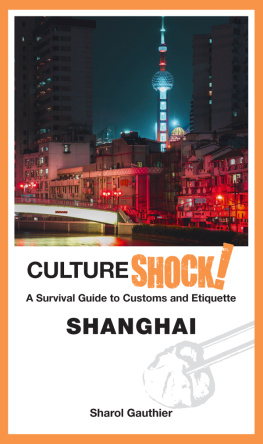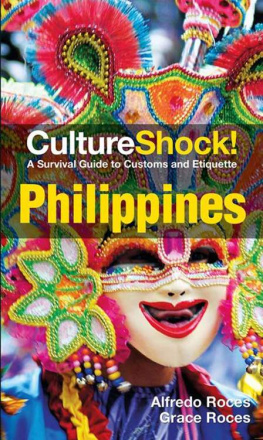Malaysia offers many leisure attractions that includes the deluxe resort of Pulau Pangkor Laut
Malaysia is a cultural potpourri for the casual visitor. Malays, Chinese and Indians dominate in Peninsular Malaysia while in Sabah and Sarawakthe Borneo states that make up the rest of the countryKadazans and Dayaks add to the variety.
Tour groups are given glimpses of the colour and richness of traditional dances, music and food, and they go away with photographs that capture the essence of their brief encounter with quaint alien cultures. The impression one gets is the greenery, the friendly people, the food, the nice hotels, the good roads and the relatively high standard of living. All very fleeting and very superficial.
But for the fairly large expatriate community that lives in the country, it means getting to really know the people and their culture. There is always a period of adjustments. The need to know and understand local customs in all its variety often gets driven home by trial and error. It is a learning process that takes time and depends on how well or how interested the expatriates are in wanting to blend into the local scene and not stand out, awkward and self-conscious.
Heidi Munan, the author, is well-placed to pick out the essentials, herself an expatriate, but who by marriage to a Sarawakian has made Malaysia her home. Her own personal experiences and the fact that hers was a case of learning by trial and error bring that insightful touch to this book spiced with humour that comes from pitfalls she herself may have encountered for want of being better informed.
There is the common storynot in this bookof the expatriate who was taken to a South Indian restaurant for lunch where he ate the banana leaf on which the food was placed, thinking it was the salad. That was his only grouse about the foodthe salad was tough!
There is plenty in CultureShock! Malaysia to arouse interest. For the casual visitor coming into brief contact with the country and its peoples or the expatriate settling down for a couple of years or more, the book should provide a useful starting point, at least, of understanding the place, and making a stay there pleasant and satisfying.
- Shiv Das, The New Straits Times, Malaysia
First Impressions
The Putra Mosque at Putrajaya, Selangor, cuts an imposing figure whether by day or night
Malaysia
It rains a great deal in Malaya, but dark and dismal days are unknown. Rain lasts an hour or two, then the edge of the veil is lifted and reveals an angry sun. Malaya is content with its almost daily bath, and for the rest of the time takes a sun cure.
Henri Fauconnier in The Soul of Malaya
Your first forays into the streets will be crowded with a bewildering tumble of impressionsthis place is foreign all right! To start with, you are a stranger in town, whether you came here as a tourist or to settle for a few years.
Weather
For one thing, it is hot. If you live in air-conditioned premises and normally use an air-conditioned car, it seems even hotter. But the heat is real. Its here to stay. You will have to learn to adapt to it.
Malaysian heat isnt of the killing, heat-stroke kind. Its seldom above 35C and fairly humid. In big towns like Kuala Lumpur, the heat is overlaid by a haze of exhaust and industrial smoke. This is unpleasant but not life-threatening; sola topis went out with Somerset Maugham though sunglasses can help to keep the glare out.
Quite a few local people carry umbrellas to shield themselves from the sun. Hats, strangely, are seldom worn except by labourers or farmers. Visitors from overseas who are used to seeing hats as part of the school uniform often comment on the crowds of schoolgirls patiently sweltering in the heat at bus stops and pedestrian crossings. If ever there was a climate for straw hats, Malaysia has itexcept that a panama hat wouldnt shelter its wearer from the very frequent showers!
Dont shy away from using either a hat or an umbrella if you want to. The locals you see on the road are walking from A to B on the shortest possible route. You, on the other hand, are strolling around town, possibly for hourssunblock lotion and/or a sunshade may preserve you from getting a nasty sunburn.
This warning doesnt only apply to the fair Caucasian skin but to anybody who is not used to the sun in generous quantities. Korean and Japanese visitors to the tropics do well to start off with protection; their children are very susceptible to burns, too! Start off with care, and get used to the sun slowly. Theres plenty of it in Malaysia!
Getting Around
For walking in town, wear comfortable clothes, preferably of cotton or linen. Synthetics can make you feel very hot and sticky in a short time, but natural fibres absorb perspiration instead. It is a good idea to wear sleeves, and not only for reasons of modesty. Clothing actually protects the wearer from the sun. Think about it: who would prefer a bikini-sized sunburn to a shirt-and-jeans one?
Kuala Lumpur (or KL as it is fondly called) and Penang take foreign ladies in shorts and halter tops calmly. However, in a country town, this type of outfit may provoke comment. The conservative population will consider such shameless attire as yet another proof of the wicked Western decadence theyve been admiring on TV.
Besides the heat, theres another danger in townthe traffic. Kuala Lumpur may not be a huge town by world standards but theres quite enough traffic to get run over by. Use the pedestrian crossings and overhead bridges; theyre there for your own good! In the busy city centre areas, stout metal rails separate the road from the pavement. Do not be tempted to stroll on the road margin or dodge through the traffic lanes to cross the road. Besides a never-ending stream of cars studded with motorbikes, there are public buses.
Public bus services ply town and suburbs. Some of these dont have a conductor so it is essential to have the right fare ready. There is such a thing as a KL bus timetable and no home should be without onenot even if you own a car or generally use taxis. The timetable will give only the vaguest information as to when the bus will come, but it contains information about whence it cometh and whither it goeth after it has vanished around Chow Kit corner.
One word of warning: do not use buses during the rush hours! Rush hours affect the otherwise friendly Malaysian who tends to get impatient, especially in a jam-packed bus. Everybody seems to be wearing rubber slippers or tennis shoes in KL, except at 5:15 pm on a bus or the LRT. Thats when theyre all shod in hob-nailed boots! The danger of having ones toes trampled is very real.
The LRT (Light Rail Transit) is an overhead and underground railway that connects some of the towns busiest points and gives passengers a nice overview of the towns general layout. The LRT, the Monorail and a complementary suburban train service are designed to entice even the car owner to leave his vehicle at home and come into town by train, hopefully relieving inner-city traffic congestion.
















